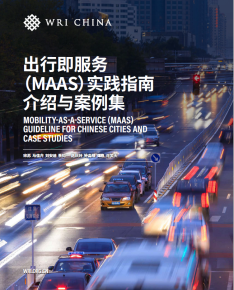MOBILITY-AS-A-SERVICE (MAAS) GUIDELINE FOR CHINESE CITIES AND CASE STUDIES
The purpose of this report is to provide a feasible MaaS implementation framework with the analysis of some successful cases of MaaS projects around the world.
MaaS is a new concept of transport service, which refers to “the integration of various forms of transport services into a single mobility service, accessible on demand”, as defined by MaaS Alliance in 2017. MaaS is available anytime and offers integrated planning, booking and payment, as well as enroute information to provide easy mobility and enable life without having to own a car.
Instead of acting as competitors to public transport systems, MaaS offers the possibility to redefine the integrated transport system with the services covering public transport and multiple kinds of shared and private mobility services into one platform.
The development of MaaS is also consistent with China’s low-carbon and sustainable strategy. China has been focusing on testing and piloting MaaS projects in recent years. Many government departments, such as the Ministry of Transport and city governments, have highlighted to develop MaaS or pilot in their integrated transport strategies.
However, the concept of MaaS is still quite new for China and the world. The current MaaS platform in Beijing and the trial in Guangzhou have kicked off the exploration of MaaS in China. There are more pilots in Europe, however, they are still in the early stages with both lessons and gaps. There is a need to take this opportunity to learn the experiences from China and the world, in order to better design the MaaS planning and implementation framework and provide recommendations for a successful MaaS development.
Report chapters:
- Chapter 1: The Concepts of MaaS.
- Chapter 2: How to Plan and Implement MaaS?
- Chapter 3: Case Studies and Key Element of Success
- Chapter 4: Insights and Recommendation for China
- Appendix: 10 MaaS Case Studies
Projects

New Urban Mobilities
Visit ProjectWRI helps China and other Asian countries achieve green, safe, healthy, and equitable urban transitions
Part of Sustainable Cities
Sustainable Mobility
Visit ProjectSustainable Mobility Project aims to contribute to the development of low-carbon transportation in China, and build a green, efficient, inclusive and resilient urban mobility system.
Part of Sustainable Cities

